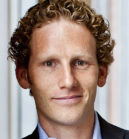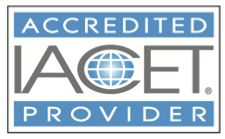Removing Barriers to Change in Organizations Course
What constitutes true change? How do you convince others to change? How do you minimize and overcome barriers to change?
In the Removing Barriers to Change in Organizations course, you’ll learn about barriers to change and how to overcome them by being a catalyst for the success of your organization. Professor Jonah Berger, author and word of mouth marketing expert, designed this change management course to help you enhance your persuasion and influence skills so you can inspire change within others. He’ll explain how to overcome inertia and reframe change using the REDUCE framework.
By the end of this course, you’ll know the strengths and weaknesses of multiple change strategies that you can apply in business and life.
Why Study Barriers to Change?
- Projects with superb change management are six times more likely to achieve outlined expectations and five times more likely to stay on schedule.1
- 76% of CEOs claim that acclimating to change is a competitive advantage.2
- 70% of transformational change efforts fail; only one in three succeed.3
1https://empower.prosci.com/introduction-to-change-management-guide
2https://www.mckinsey.com/business-functions/organization/our-insights/the-irrational-side-of-change-management
3https://www.mckinsey.com/business-functions/organization/our-insights/the-irrational-side-of-change-management
Program Details
Start Dates:
Enroll Immediately
Duration:
4 weeks
Commitment:
2 hours per week
Program Format:
100% Online
Program Tuition:
$599
READY TO START?
NEED A LITTLE MORE INFO?
Removing Barriers to Change in Organizations Modules
MODULE 1
This module begins by addressing the challenge of change and defining the status quo bias. You’ll understand the importance of weighing and framing the potential advantages and disadvantages of change to overcome loss aversion. You’ll also learn about the REDUCE framework and why people tend to ignore us or rebel when we push them to change. By the end of this module, you’ll better understand how to be a catalyst for change by identifying barriers to organizational change and implementing change agents that inspire minds and affect behavior.
Module Overview
- The Challenge of Change
- Getting People to Change
- The REDUCE Framework
MODULE 2
In this module, you’ll examine case studies about Procter & Gamble’s Tide Pods and the Arden House Experiments to understand why warnings backfire. You’ll learn change strategies, like providing choices, that empower people’s desire for freedom and autonomy. You’ll also study the endowment effect, how it deters people from changing, and how you can ease its impact. By the end of this module, you’ll know effective ways to surface the cost of inaction and frame new things as old so you can help others embrace change.
Module Overview
- Reactance — How Warnings Become Recommendations
- Need for Freedom and Autonomy
- Provide a Menu
- Ask, Don’t Tell
- Highlight a Gap
- Endowment — Staying Put Feels Costless
- Surface the Cost of Inaction
- Burn the Ships
- Frame New Things as Old
MODULE 3
This module delves into how distance and uncertainty contribute to barriers to change. You’ll learn examples of confirmation bias and political polarization so you can identify the moving middle and unsticking points where people agree rather than disagree. You’ll also analyze examples from Zappos, Acura, and Kia to understand how you can harness freemium and lower upfront costs to facilitate organizational change. By the end of this module, you’ll have multiple strategies that ease uncertainty and help people experience the value of change.
Module Overview
- Distance — Too Far from Their Backyard, People Tend to Disregard
- Confirmation Bias
- The Movable Middle
- Ask for Less
- Switch the Field to Find an Unsticking Point
- Uncertainty — Easier to Try, More Likely to Buy
- Harness Freemium
- Shrink Upfront Costs
- Drive Discovery
- Make it Reversible
MODULE 4
This module distinguishes between weakly and strongly held attitudes to demonstrate why some behaviors require more information, evidence, or proof before changing. You’ll learn about the translation problem and importance of corroborating evidence that reinforces change. By analyzing many examples, you’ll understand how much evidence, and thus resources, a change requires. By the end of this module and change management course, you’ll have a grasp on the elements of barriers to change and be able to enact strategies that enable change within your organization and self.
Module Overview
- Corroborating Evidence — Some Things Need More Proof
- Who Else to Involve
- When to Space Corroborating Evidence Over Time
- How to Best Deploy Scarce Resources When Trying to Change Minds on a Larger Scale
- Course Conclusion
Key Certificate Program Takeaways
In the Removing Barriers to Change in Organizations course, participants will learn how to:
- Improve their persuasion skills using the REDUCE framework
- Help people change by easing endowment and surfacing the cost of inaction
- Ease change’s uncertainty by demonstrating its value
- Assess the amount of evidence, time, and resources a change will require
Barriers to Change Faculty

Jonah Berger
Associate Professor of Marketing
Faculty Research Interests
- Word of mouth marketing
- Social influence
- Why things catch on
- Viral marketing
- Natural language processing
Professor Jonah Berger is a world-renowned expert on word of mouth, social influence, consumer behavior, and how products, ideas, and behaviors catch on. He has published dozens of articles in top‐tier academic journals, teaches Wharton’s highest rated online course, and popular accounts of his work often appear in places like The New York Times, Wall Street Journal, and Harvard Business Review. Berger is the internationally bestselling author of multiple books including Contagious: Why Things Catch On (over half a million copies in print in over 30 languages) and Invisible Influence: The Hidden Forces that Shape Behavior. Berger often keynotes major conferences and events like SXSW and Cannes Lions and consults for companies like Apple, Google, GE, Coca‐Cola, Vanguard, 3M, and The Gates Foundation.
Request Info
Learn more about Wharton Online’s Removing Barriers to Change in Organizations course before enrolling in the program.




